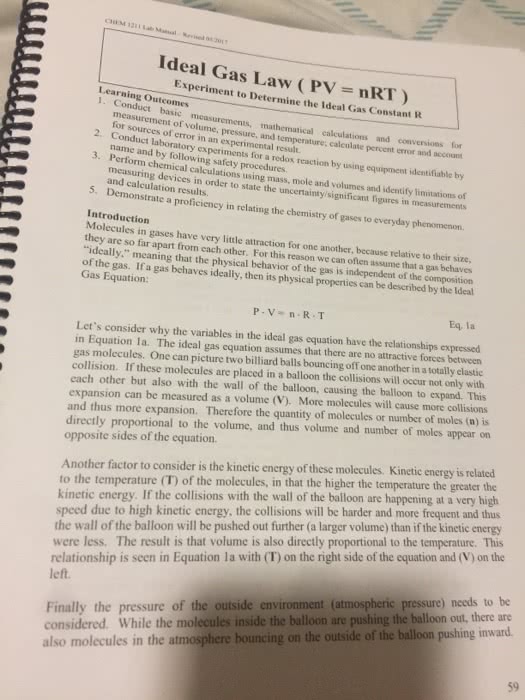CHEM 1000 Chapter Notes - Chapter 1: Collision Frequency, Barometer, Gas Laws
Document Summary
We will be looking at macroscopic and microscopic properties: Macroscopic: properties of bulk gases observable. Microscopic: properties at the molecular level, not readily observable. Mass of molecules, molecular speed, energy, collision frequency. Macroscopic properties: our aim is to look at the relationship between the macroscopic properties of a gas and end up with the gas laws. Pressure: to contain a gas you must have a container capable of exerting a force on it (e. g. the walls of a balloon). This implies that the gas is exerting a balancing force. Normally we talk about the pressure (force/area) rather than force. Measuring pressure: the simplest way to measure gas pressure is to have it balance a liquid pressure. Therefore we need to quantify the liquid pressure. Barometer: measure atmospheric pressure, on the left the tube is open. On the right the tube is closed and a liquid column is supported by the atmospheric pressure: Gas pressures can be measured with a manometer.



